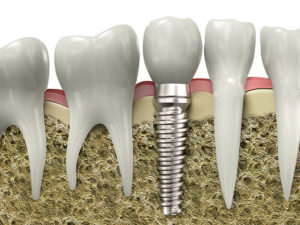Dental Implants
What are dental implants? They are a replacement for your missing tooth root. It is the next best thing to your own natural tooth. Implants provide an excellent option for restoring missing teeth. Replacing anywhere from one tooth to an entire mouth, implants provide a titanium root to place a crown, bridge, partial or denture on top. Secure and durable, implants provide a long lasting permanent solution to missing teeth.
There are MANY advantages to implants including improved appearance, comfort and speech especially if you are currently using a removable appliance. They help preserve your bone in that area of the jaw. They are durable and can last your entire life. They also improve your oral health as it is easier to floss and don’t require you to alter the permanent teeth on either side of the missing tooth for crowns.
Implants are very successful with a success rate of up to 98%. In most cases, if you are healthy enough to undergo a routine dental extraction then you can consider a dental implant. You need to have healthy gums and bone and committed to good oral hygiene. Heavy smokers, people suffering from uncontrolled diabetes or heart disease, or patients who had radiation therapy to the head/neck area may not be good candidates.
We work closely with the oral surgeon with each case. Together, we develop an individualized treatment plan that addresses your specific needs.Getting an implant is a multistep process.
First the oral surgeon places the titanium implant into the jaw bone in the area of the missing tooth. It takes 3-4 months for the jaw bone to grow around the titanium post and have it become integrated. At that point, a small connector is placed on the implant called an abutment then a crown is attached to that.
The whole process takes time, but there actually is very little discomfort and patients typically love how natural their new tooth feels.
We’d be happy to discuss treatment options for your missing tooth/teeth at your next visit with Padre Dental.
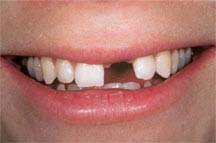
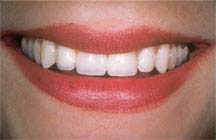
Orthodontic Treatment in Kids
What is early or interceptive orthodontic treatment? This is also called Phase I ortho. There are times that children exhibit signs of teeth crowding or jaw problems as they are growing. Children between ages of 6 to 10 years are excellent candidates for early orthodontic care because it takes advantage of the patient’s physical growth potential at a stage when they are growing at a rapid rate. A few conditions that might need early intervention include:
- Severe overbite “buck teeth” that can lead to tooth injury
- Cross bite
- Protruding lower jaw
- Open bite
- Finger sucking
- Early or late baby tooth loss
- Crowding, misplaced or blocked out teeth
We can help diagnose and guide your child through these orthodontic conditions. Some intervention is possible in our office and other times we will refer you to an orthodontist.
Orthodontic Treatment in Teens and Adults
The treatment begins when all the permanent teeth have erupted and consists of straight-forward orthodontic therapy. There are MANY options available including traditional brackets, clear brackets and Invisalign.
“We are happy to consult with you or your child about any orthodontic needs. We proudly offer Invisalign in our office. Also, when appropriate a referral to an orthodontist will be made.”
Kids & Teens
At Padre Dental, we really enjoy getting to treat not only the adults, but the kids too! Kids and teens these days are super busy. We understand that as we are all busy with our own families too. We’d like to take the opportunity to be an advocate in your child’s oral health as they grow up and make their way through their teen years. There are a couple major points to consider when is comes to kids and teens.
Prevention of cavities
Cavities are caused when sugars in the food we eat and the bacteria in our mouths mix together and produce an acid that eats away at the hard, outer layer of your teeth. If this process happens repetitively, a small hole will form. Different factors will affect at what rate the hole increases in size. Once the hole touches the inner layer of the tooth, the dentin, and can then progress vary rapidly, especially in children.
Cavities are a preventable disease. There are many steps you can take at home to help your child stay cavity free. It is also important to visit the dentist regularly so we can assess your child’s condition, help develop a personalized prevention program and if decay does develop, restore it in a conservative way.
The following steps will help your child be part of the cavity-free generation:
- Beware of frequent snacking
- Brush effectively twice a day with a fluoride tooth paste
- Floss once a day
- Offer a balanced diet
- Have sealants applied when appropriate
- Seek regular dental check-ups
- Fluoride treatments
Prevention of dental injuries
 It is important that kids involved in any contact sport such as football, baseball or soccer wear a proper fitting sports mouth guard. This will protect their teeth and help prevent injures. If a dental emergency happens, call the office immediately for help. If a tooth is knocked out, don’t touch the root and try to place it back in the socket if you can. If not, in the child’s mouth next to the cheek keeping it moist with saliva is second best. If a tooth has been badly fractured, again call the office for help.
It is important that kids involved in any contact sport such as football, baseball or soccer wear a proper fitting sports mouth guard. This will protect their teeth and help prevent injures. If a dental emergency happens, call the office immediately for help. If a tooth is knocked out, don’t touch the root and try to place it back in the socket if you can. If not, in the child’s mouth next to the cheek keeping it moist with saliva is second best. If a tooth has been badly fractured, again call the office for help.
Periodontal “Gum” Disease
The American Dental Association (ADA) defines gum disease as “an infection of the tissues surrounding and supporting the teeth.” Periodontal disease is a serious infection of the gums and bone that can lead to tooth loss if untreated. Periodontal disease may be the most common chronic infection in adults. 3 out of 4 adults have periodontal disease. It is the leading cause of tooth loss in adults.
If you have “gum” disease, you may experience the following:
- Gums that bleed when you brush
- Red, swollen tender gums
- Bad breath
- Tartar buildup
- Loose-teeth
What causes periodontal disease? It is caused by plaque. Plaque is a sticky film of bacteria that forms on your tooth. The gum tissue starts to pull away from the tooth in response to the plaque, forming a pocket for the bacteria to invade. The toxins released by the bacteria along with the body’s own enzymes cause the connective tissues in the gums and bone to break down. As the disease progresses, the pockets deepen and more gum tissue and bone are destroyed. When this happens, teeth are no longer anchored in place, they become loose and tooth loss occurs.
There are other factors that contribute to the cause of periodontal disease besides bacteria which includes:
- Hormonal changes- pregnancy, puberty, menopause
- Illnesses such as HIV, cancer and diabetes that compromise the body’s immune system
- Medications that lesson the flow of saliva
- Bad Habits such as smoking
- Poor oral hygiene
- Family genetics
- Stress
- Poor nutrition
- Clenching and grinding
Periodontal disease is a serious infection of the gums and bone that can lead to tooth loss if untreated. Periodontal disease may be the most common chronic infection in adults. 3 out of 4 adults have periodontal disease. Bacteria travel under the gum tissue causing pockets.
What are the treatments for periodontal disease?
Treatment for periodontal disease can reduce the bacteria causing your infection, shrink the size of your periodontal pockets and stop the infection from spreading or getting worse. Treatment typically involves scaling and root planning (SRP). This removes the plaque, tartar and stains from teeth surfaces. Then the second part involves killing the bacteria.
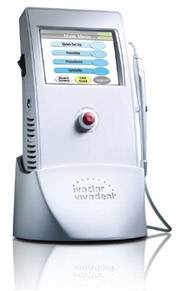
We’ll be happy to discuss any periodontal concerns you may have and will do a complete perio evaluation as part of a new patient exam. We use both Arestin and soft-tissue laser at Padre Dental. We will determine which treatment is best for you depending on your specific periodontal needs.
Why should worry about periodontal disease?
Besides the potential of future tooth loss and general teeth sensitivity, researchers have found a direct link between periodontal disease and the following:
- Heart disease
- Diabetes
- Dementia
- Rheumatoid arthritis
- Premature birth
Inflammation is probably a common denominator, experts say. If you have any of the diseases mentioned above, you are at a higher risk for periodontal disease. And vice versa, if you have gum disease you are at greater risk of getting heart disease, diabetes, etc. It has been found that treating your periodontal disease can help lesson the symptoms.
How do I prevent periodontal disease?
The best way to help prevent gum disease is to improve your oral-care habits by doing the following every day:
- Flossing, which loosens and removes plaque between teeth and below the gum line
- Brushing with a fluoride toothpaste, which removes plaque on the teeth and gums
- Using an antimicrobial mouth wash to reduce the bacteria in your mouth.
Get your teeth cleaned professionally on a regular basis, and ask us about the best cleaning schedule for you.
 |
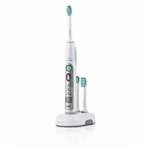 |
Extractions
Occasionally, a tooth or multiple teeth may need to be pulled. There can be several reasons for why this happens.
Severely decayed tooth that doesn’t have enough tooth structure left to restore with a crown.
Poorly positioned tooth that is making it difficult to clean and maintain the tooth. This scenario is common with wisdom teeth. If left untreated, it can lead to infection and damage to surrounding teeth.
Periodontal disease has damaged the bone and gums to the point where there isn’t enough bone to hold the tooth in the jaw anymore. It also can be compromising the integrity of the bone of the adjacent teeth.
If we determine that a tooth or teeth need to be extracted, we will explain why this needs to happen. And we will explain the different options for restoring the missing space. We can do extractions in the office under local anesthetic. For more difficult cases or cases requiring general anesthesia, we will refer you to an oral surgeon. Sometimes patients need antibiotics before or after an extraction because of infection or certain health conditions.
What to expect after an extraction?
- Most people recover in just a few days. Typically you’ll need some mild painkillers.
Cold pack to keep the swelling down. - Soft food diet.
- Warm salt water rinses after the first 24 hours.
- NO SMOKING.
- Relax, no strenuous exercise.
- No drinking with straws.
Complications can occur during and after an extraction, but they are rare. Whether you have your extraction(s) at Padre Dental or at an oral surgeon, it is important to ask questions and to follow your post-op instructions.
Root Canals
What is a root canal? A root canal is a treatment used to repair and save a tooth that is badly decayed or becomes infected.
Root canal procedures are performed when the nerve of the tooth becomes infected or the pulp becomes damaged. During a root canal procedure, the nerve and pulp is removed and the inside of the tooth is cleaned and sealed.
Root canal procedures have the reputation of being painful. Actually, most people report that the procedure itself is no more painful than having a filling placed. The discomfort experienced in the period leading up to a seeking of dental care is truly the painful period of time, not the root canal procedure itself.
Why Does the Pulp Need to Be Removed? When nerve tissue or pulp is damaged, it breaks down and bacteria begin to multiply within the pulp chamber. The bacteria and other decayed debris can cause an infection or abscessed tooth. An abscess is a pus-filled pocket that forms at the end of the roots of the tooth. An abscess occurs when the infection spreads all the way past the ends of the roots of the tooth. In addition to an abscess, an infection in the root canal of a tooth can cause:
- Swelling that may spread to other areas of the face, neck, or head
- Bone loss around the tip of the root
- Drainage problems extending outward from the rootA hole can occur through the side of the tooth with drainage into the gums or through the cheek with drainage into the skin.
What Damages a Tooth’s Nerve and Pulp in the First Place? Nerve and pulp can become irritated, inflamed and infected due to deep decay, repeated dental procedures on a tooth and/or large fillings, a crack or chip in the tooth, or trauma to the face.
What Are the Signs that a Root Canal Is Needed? Signs to look for include:
- Severe toothache pain upon chewing or application of pressure
- Prolonged sensitivity/pain to heat or cold temperatures (after the hot or cold has been removed)
- Discoloration (a darkening) of the tooth
- Swelling and tenderness in the nearby gums
- A persistent or recurring pimple on the gums
- Sometimes no symptoms are present
If you end up needing root canal therapy, we will either perform the procedure ourselves at Padre Dental or refer you to an endodontist. It just depends on the difficulty of the case. An endodontist is a specialist in root canals. Once the root canal has been completed, in most cases the tooth will need a crown. This helps prevent the tooth from fracturing in the future. Until you have the crown completed, you should be careful chewing on the tooth. Most people can resume normal activities the next day after a root canal. The area around the tooth will be sensitive for several days due to inflammation. This discomfort should be relieved with OTC medicine such as Advil or Aleve. If you have any questions about root canal therapy, please ask at your next appointment with Padre Dental.
Nightguards
What is a night guard? It is a small plastic appliance shaped like a horseshoe. It fits over the tops of your teeth. It can be made for either the upper or lower arch. It is typically hard plastic on the outer surface and soft on the inside for comfort.
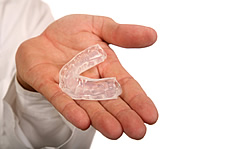
Why do I need a night guard? Many people find that they clench and/or grind their teeth especially at night. This is called bruxism. The symptoms you may experience include jaw joint disorders, headaches, neck pain, jaw pain, ear pain, tense muscles, and excessive wear on the teeth. Bruxism can also be a trigger for migraines. Wearing a night guard can help alleviate some of your symptoms and help protect your teeth from future wear and damage. We are happy to talk to you about any questions or concerns you may have about grinding.


